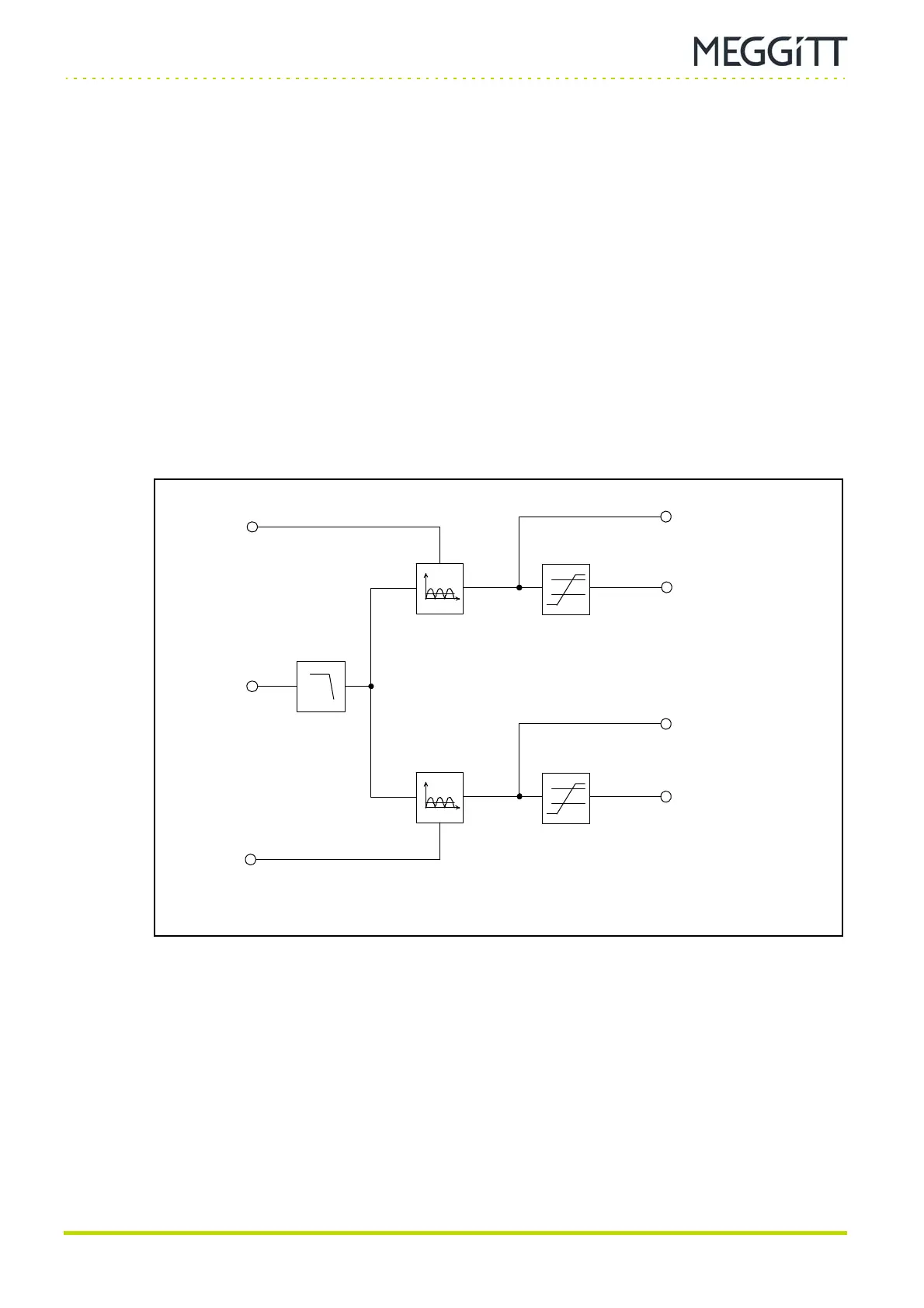HARDWARE MANUAL Document reference MAMPS-HW/E
VM600 machinery protection system (MPS) Edition 18 - March 2022
7-14
Eccentricity measurements
PROCESSING MODES AND APPLICATIONS
7.8 Eccentricity measurements
(1) Description
In addition to knowing the vibration of a shaft, it is sometimes useful to know the bow in a
shaft due to gravity or temperature gradients. This is a measure of the eccentricity of the
shaft. One of the proximity probes used for shaft relative vibration measurement can
additionally provide data to a processor having a low-pass filter and peak-to-peak value
rectifier. The low-frequency excursion of the shaft is measured when the shaft passes
through low speeds, for example, while the rotating machine is in its start-up phase or during
run-down.
The following front-end components are the most commonly used:
• TQxxx proximity transducer + IQSxxx signal conditioner
• TQxxx proximity transducer + IQSxxx signal conditioner + (Intrinsically safe) GSVxxx
power supply and safety barrier (applications).
(2) Block diagram
Eccentricity processing characteristics:
• Low-pass filtering: Frequency up to LPF Hz (where LPF = 5 Hz by default, software
settable in the range 5 to 10 Hz)
• Cutoff slope = 24 dB/octave
• Ripple = 0.5 dB
• True Peak-to-Peak rectification used for continuous eccentricity measurement
• Peak-to-Peak per Revolution rectification used for triggered eccentricity measurement.
For this type of measurement, the 1/REV tacho input must be available.
1/REV
input
Figure 7-10: Block diagram showing eccentricity processing
Alarm level
detector
Position
input
Peak-Peak
Peak-Peak/Rev
Output 1
eccentricity value
1/REV
input
Output 1
alarms
Output 2
eccentricity value
Output 2
alarms
Low-pass
Alarm level
detector
